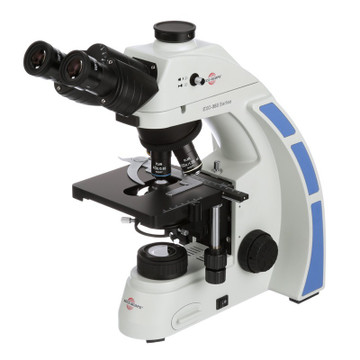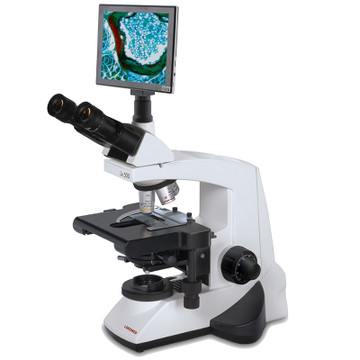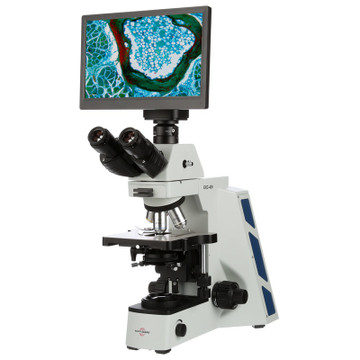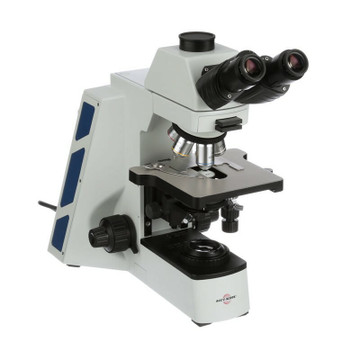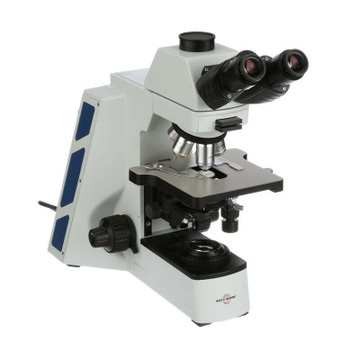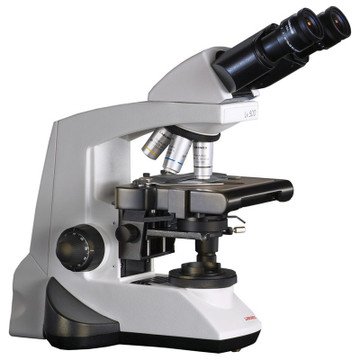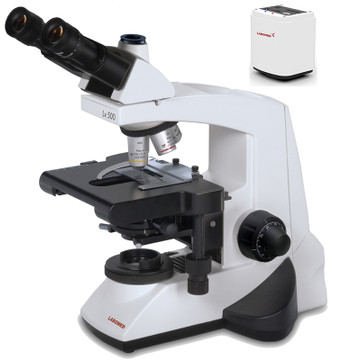
-

-

ACCU-SCOPE EXC-350-40 Trinocular Cytology Microscope
€1,634.48€1,816.66 -

-

-

-

-

-

ACCU-SCOPE EXC-400 Pathology Digital Microscope Package
€3,218.07€3,365.61 -

-

ACCU-SCOPE EXC-400 Trinocular Cytology Microscope with Plan Objectives
€3,148.36€3,498.18 -

-

-

-

-

-

What Are Cytology and Pathology Microscopes
Cytology and pathology microscopes are used for viewing tissue cells from organs to study changes that occur when they are affected by diseases as well as some types of cancer, like cervical cancer. Pathology and cytology microscopes are also used to diagnose inflammatory conditions, infectious diseases, and thyroid conditions.
Often, pathologists spend long hours analyzing specimens under a microscope, which can be uncomfortable and taxing on the eyes, brain, and body. Having the proper microscope for pathology lab work can help to reduce strain and achieve more accuracy and efficiency.
How to Choose the Right Microscope for Pathology
The first step in determining what pathology microscope to buy is to figure out where, when, and how it will be used and by whom. If it’s students, you will want a super durable model that can be adjusted often to fit different people. Another important consideration is if you’ll need a digital microscope camera.
Generally speaking, cytology microscopes offer 4x, 10x, and 40x infinity plan objectives yielding crisp and high-contrast images through the periphery of the field of view (FOV). Whereas pathology microscopes generally add a 20x objective and 1x or 2x objectives allowing a larger FOV, which can save precious time while scanning. Some manufacturers offer higher-grade objectives, such as apochromatic and fluorite. Other features include LED illumination for a softer white light and exudes no heat versus halogen bulb which tends to heat up at the base to minimize eye strain when using a digital pathology microscope.
Which Microscope is Mainly Used in a Pathology Lab
If you’re looking for a microscope for pathology lab work, a bright-field microscope is traditionally a good choice because it provides high-resolution images of tissues and cells for thorough examination. The bright field background makes it easier for a professional to see fine details of specimens. However, this is not the only microscope that is used in pathology labs. Some labs have specialized needs, and in these situations, they may require fluorescence microscopes and confocal microscopes.
How Are Pathology Microscopes Used
Microscopes are used in pathology to analyze a wide variety of specimens. Quite often, the pathologist is looking for an abnormality in their sample, something that could not be seen with the naked eye. Some of these differences may include structural, color related, or an abnormal amount of cells. Using different contrast methods and different tests can help illuminate differences, but they all require a pathology microscope to be seen.
The best pathology microscopes offer ergonomic tilting heads, providing the user with the most comfortable viewing angles. This helps them work longer, minimizes eyestrain and with fewer physical distractions. The cytology microscopes offered by New York Microscope Company are used to examine cells from tissues and fluids to determine an accurate diagnosis of a disease.
Pathologists are frequently under strict deadlines, and their work must be completed quickly and accurately. The right tools for the job can make a big difference in being effective and efficient. Great care must be given to selecting the right microscope and pathology microscope slides for pathology lab work.
The Importance of a Pathology Microscope
Pathology is the overarching science and refers to the study of disease, illness, and injury. Pathologists are experts at viewing samples and providing diagnostic information. Pathology microscopes are a critical tool and an essential part of viewing cells and tissue samples. They allow a pathologist to see all of the characteristics of the cell so they can determine if there is an abnormality that would lead to a medical diagnosis.
Cytology is a branch or subspecialty of pathology. Cytologists typically use microscopes to view individual cells or a cluster of cells. Most commonly, cytology is used to diagnose or screen for cancer.
Cytology is not the only subspecialty of pathology. The field is quite broad and encompasses both anatomic pathology and clinical pathology. In anatomic pathology, specialists study tissue and organs. Under the anatomic pathology category, you can find people working in neuropathy, gynecologic pathology, endocrine pathology, and cardiac pathology. In the clinical branch, these professionals review blood, urine, and tissue samples. Professionals working in clinical pathology might be looking into immune system dysfunction, hormone disorders, and poisoning.
All of the branches of study that form the overarching field of pathology require microscopes. Without microscopy, this field of science would simply not exist.
Custom Quotations for Cytology and Pathology Microscopes
Let our experts create a custom quote just for you with our best pricing and terms on pathology and cytology microscopes. Simply tell us your requirements, and we'll do the rest.
If you need product advice, technical support, or to enquire about quantity discounts, feel free to contact us by email or call us at (877) 877-7274.
New York Microscope Company is the only microscope company to offer a Free Service Protection Guarantee with the purchase of every pathology microscope. Visit our Free Service Protection page for more details.

